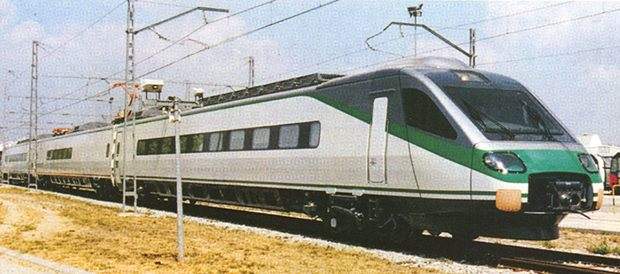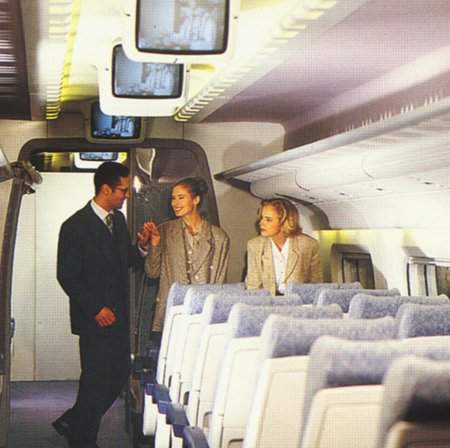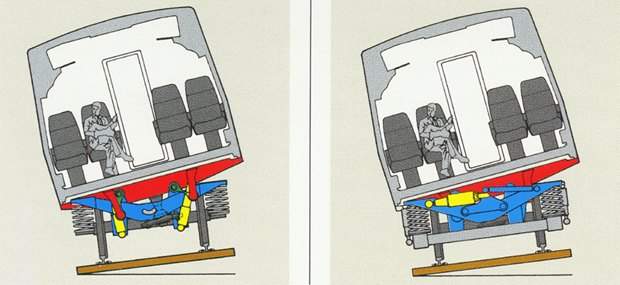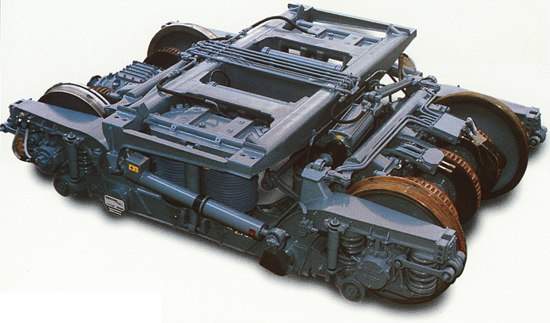The Spanish Railways’ (RENFE) summer 1999 timetable marked the introduction of the first tilting trains on the busy route between the capital, Madrid, and Valencia.
This pivotal route is central to RENFE’s fortunes, and business travellers on this route represent no less than 53% of total revenue, putting it at the front of the queue for service enhancements and investment in the latest rolling stock and technology.
Whereas Spain’s other high-speed train project, the Madrid-Sevilla line is the European-standard 1,435mm gauge, the gauge on the route to Valencia, and most of the rest of the Spanish rail network, is 1,668mm.
The project
Running initially at two-hourly intervals for most of the day, the new trains complete the journey from Puerto de Atocha and Atocha Cercanias, Madrid to Valencia Nord in a fast time of three hours, 30 minutes.
Most make just one or two intermediate stops, at Alcazar de San Juan and Albacete. A major campaign was launched by RENFE to market the new trains and improved services. In order to emphasise the prestige of the new trains, Wagons-Lits was brought in to provide on-train services.
A meal served at the passenger’s seat is included in the price of first class tickets, with breakfast, lunch and dinner served according to the time of day, with additional snacks and drinks available throughout all journeys.
Rolling stock
Ten new trains have been ordered to operate the new, improved services. They have been supplied by a consortium of Alstom and Fiat, and are a development of the latter’s highly successful Pendolino concept, which is being adopted increasingly widely across Europe, including the UK, Italy and Sweden. They are based closely on the ETR 460 concept which has found particular success in Italy.
Designated Class 490, each unit comprises two power cars and a single central trailer, providing a total seating capacity of 160, split between 49 first class, and 111 second class, or ‘turista’ seats.
The first class seats are arranged in a two + one configuration in one of the power cars, while the second class seats are set out two + two, in the other power car and centre trailer. These are mainly back-to-back, airline style. This vehicle also accommodates the bar/buffet area with standing space, space for a wheelchair, and a fully accessible toilet.
Use of the latest synthetic fibres has helped reduce interior noise and vibration, while reclining seats are designed by Giugiaro, the Italian designer most widely known for his work on some of the world’s finest sports cars. The bright, vivid colours chosen for the interior of the second class areas is a sharp contrast with the often drab decor in older RENFE rolling stock.
In-journey entertainment is also more plentiful than that to which most RENFE passengers are used, with five audio channels, four with pre-recorded music, and the fifth the soundtrack for an in-journey movie, shown on six video screens in each car.
Each train is powered by a pair of body-mounted Parizzi MTA-6/550 three-phase asynchronous traction motors, which drive the inner axle of each motor bogie via a cardan shaft.
The roof of the centre trailer car of each unit houses two pantographs, and each motor car has an underfloor-mounted traction converter, as well as a second convertor to provide auxiliary power for on-board systems at 380V, 50Hz ac.
The trains have a top speed of 220km/h (135mph), and their tilting capability gives the potential for 30% higher speeds through curves, which RENFE calculated would give an initial 18 minute saving on the previous journey time of just over three hours 50 minutes.
The new trains operate alongside an existing fleet of locomotives and coaches, which have also been rebranded, as ‘Arco’ as part of the relaunch. These run between Madrid and Barcelona via Valencia, with one train continuing to and from Port Bou.
RENFE’s Malaga workshops refurbished 27 coaches from the company’s B11 fleet, and made them up into six formations. These were fitted with new GC3D bogies, which made them capable of 200km/h running.
These were each hauled by a single Class 252 locomotive, a number of which were also given a new branding to mark their use of the upgraded service.
Infrastructure
Although no work has been carried out specifically ahead of the introduction of Alaris trains (formerly known as IC 2000), over 80km of the total 489km distance between Madrid and Valencia has been upgraded to make it suitable to 200km/h (125mph) operation.
This has been done in an ongoing project of improvements, including new alignments and other work to remove speed restrictions. The full programme of infrastructure work had yet to be completed when the trains were first introduced, and RENFE was planning to cut further the initial three hours 30 minutes Madrid-Valencia journey time by another 15 minutes before the end of 1999.
Signalling and communications
Each train is fitted with the ASFA200 in-cab signalling system, which allows the aspect of every signal passed to be displayed on a monitor, which is acknowledged by the driver. While not initially fitted, the trains can be easily adapted for the future addition of automatic train protection.
A sophisticated monitoring and diagnostic system is also fitted in each train cab. This consists of a central microchip control unit, which is linked to sensors fitted to many of the train’s differnet operating systems.
This allows for easier identification of problems, cutting repair and maintenance times, gives the driver and staff a guide to the status of the on-board systems. Storing this information in computer format allows more data to be collected and analysed than using older paper records.
For passengers, each trainset has an on-board telephone, and in addition to a public address system, as well as an information system controlled by the train supervisor, which shows the next stop, journey time, outside temperature, and other useful information.










